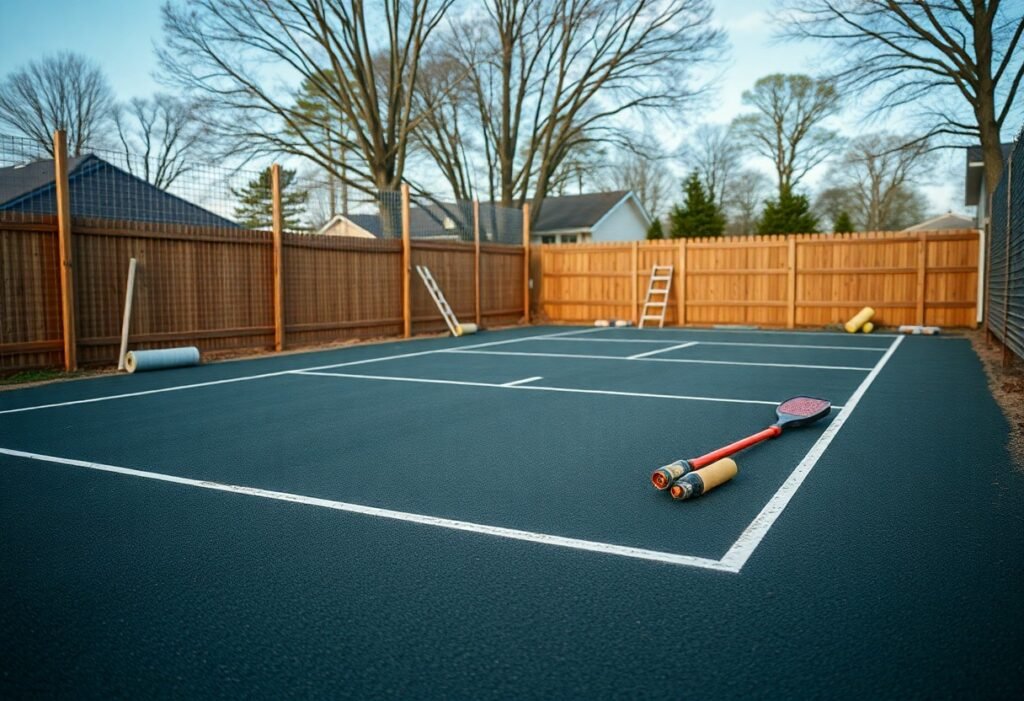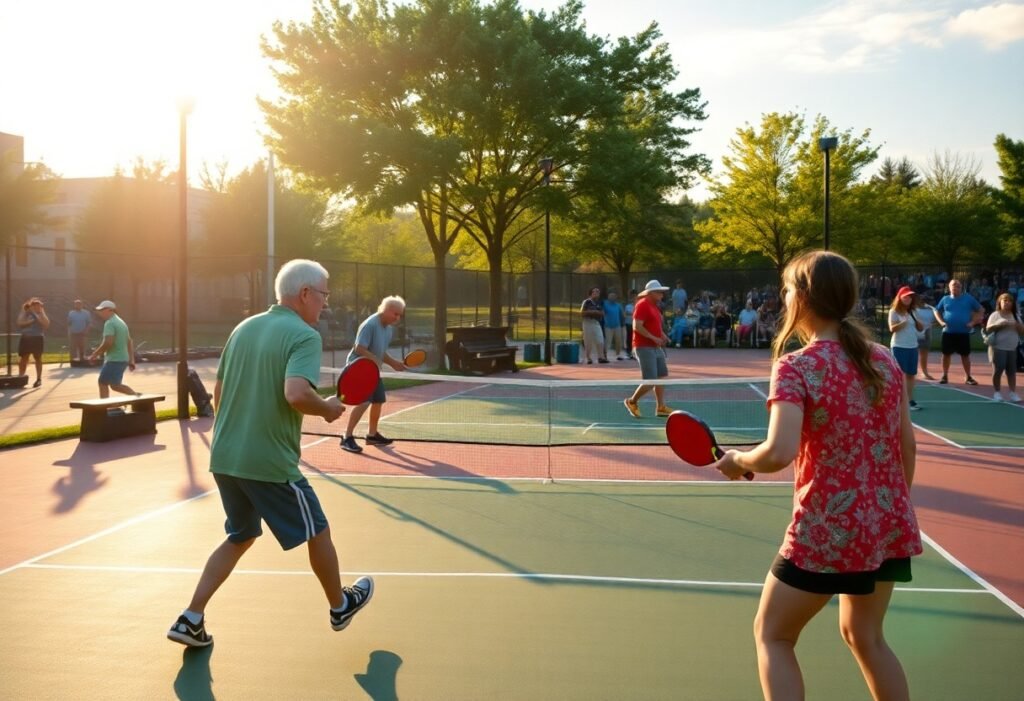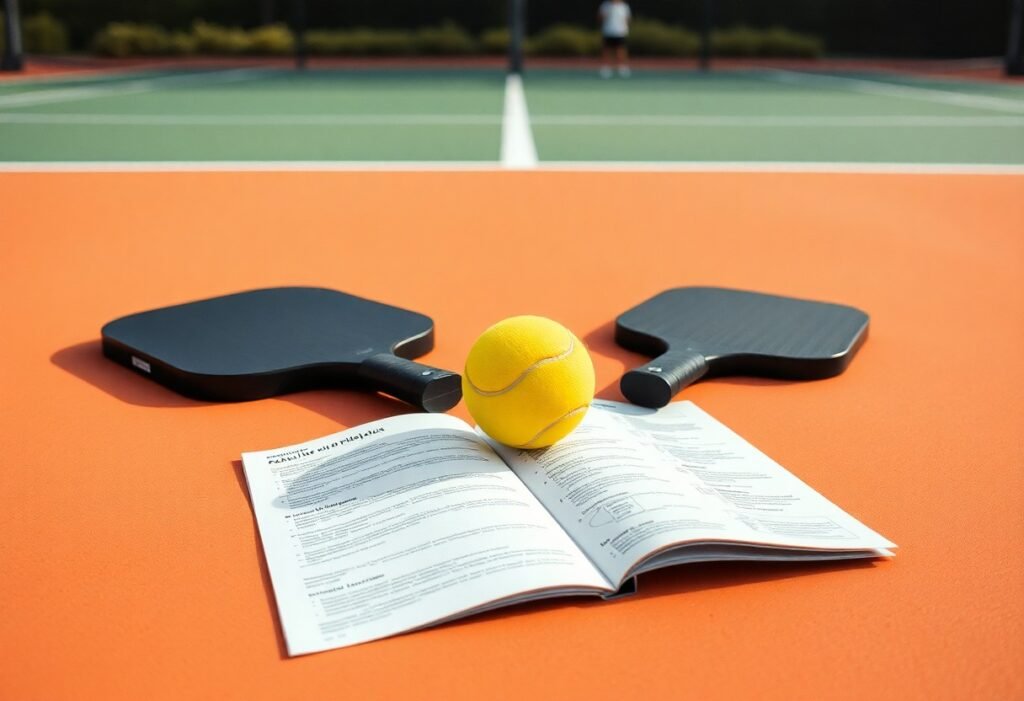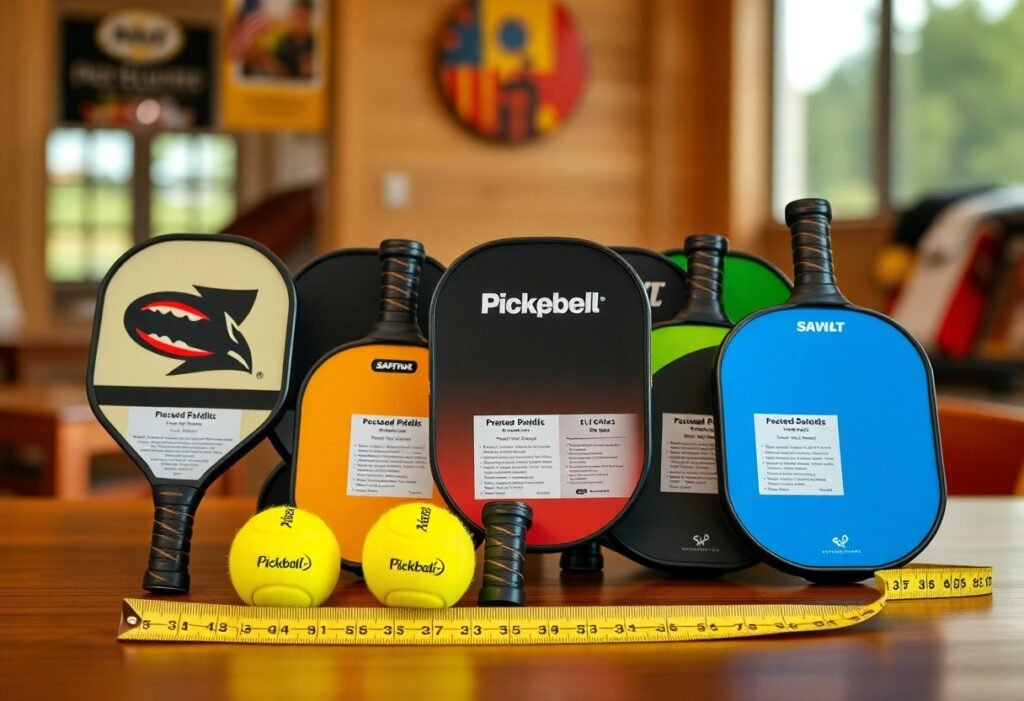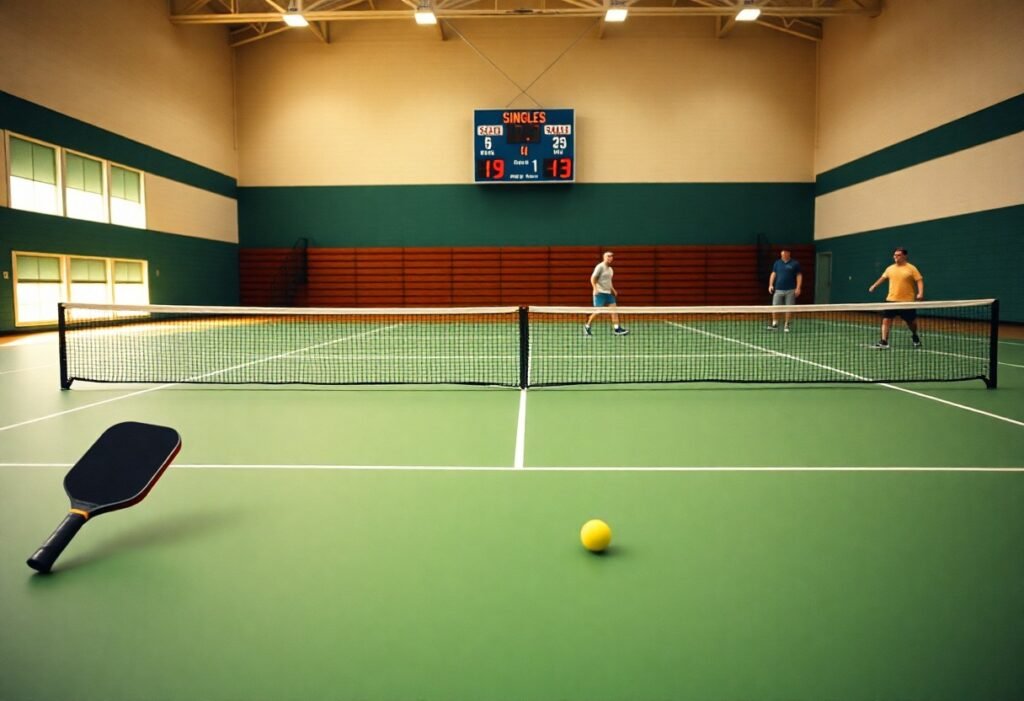Just imagine playing your favorite sport right in your own backyard. Building a pickleball court is not only a fantastic way to stay active but also offers a great space for social gatherings and family fun. You’ll need to ensure you have enough space and proper materials to create a surface that’s both durable and safe. This guide will walk you through the steps to transform your yard into a pickleball haven, allowing you to enjoy the benefits of this exciting sport anytime you choose.
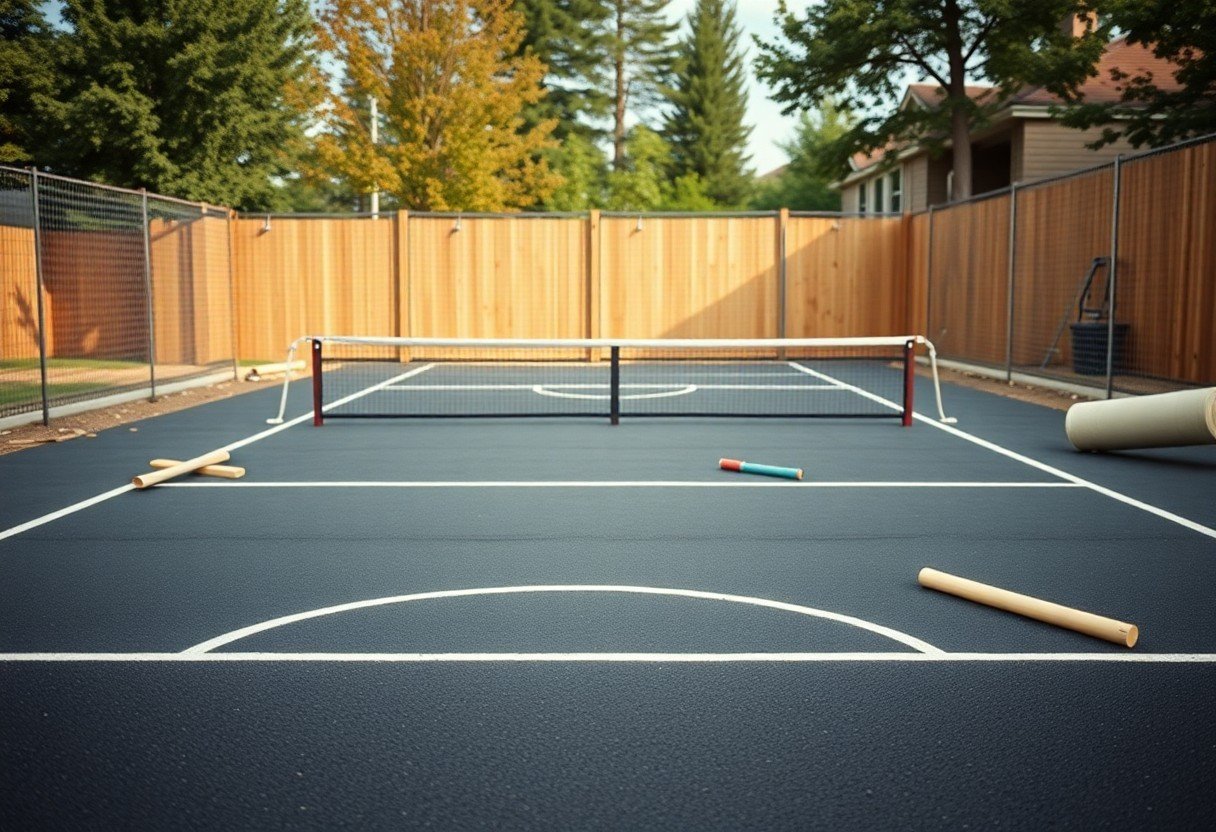
Key Takeaways:
- Choose a suitable location with enough space, ideally 20×44 feet for a standard court.
- Ensure proper surface preparation, using materials like concrete or asphalt for durability.
- Install appropriate markings, nets, and fencing to meet official specifications.
Understanding Pickleball Court Specifications
Dimensions of a Regulation Court
A regulation pickleball court measures 20 feet wide by 44 feet long for doubles play, while singles play utilizes the same length but a narrower width of 20 feet. You need to account for additional space around the court for safety and player movement, ideally aiming for at least 10 feet of clearance on all sides.
Surface Materials and Options
Your court’s surface can significantly affect gameplay. Popular options include concrete, asphalt, and specialized sports tiles like polyurethane or sport surfaces. Each provides different levels of traction, durability, and maintenance requirements.
Concrete offers a solid foundation and durability but requires a textured finish for grip. Asphalt provides a good balance of cost and playability, also needing a surface treatment to ensure optimal conditions. If you prefer a softer touch, consider portable or permanent sports tile systems, which provide excellent shock absorption and minimize injuries.
Court Markings and Layout
Court markings are crucial for defining playing boundaries and areas. You should use permanent paint or tape to outline the non-volley zone (kitchen), along with the service areas and centerline.
Markings should be clearly visible, with a width of about 2 inches. Typically, a contrasting color to the surface is used. The non-volley zone extends 7 feet from the net, and the service areas are divided by a centerline; both are vital for adhering to pickleball’s official rules and for a competitive experience.
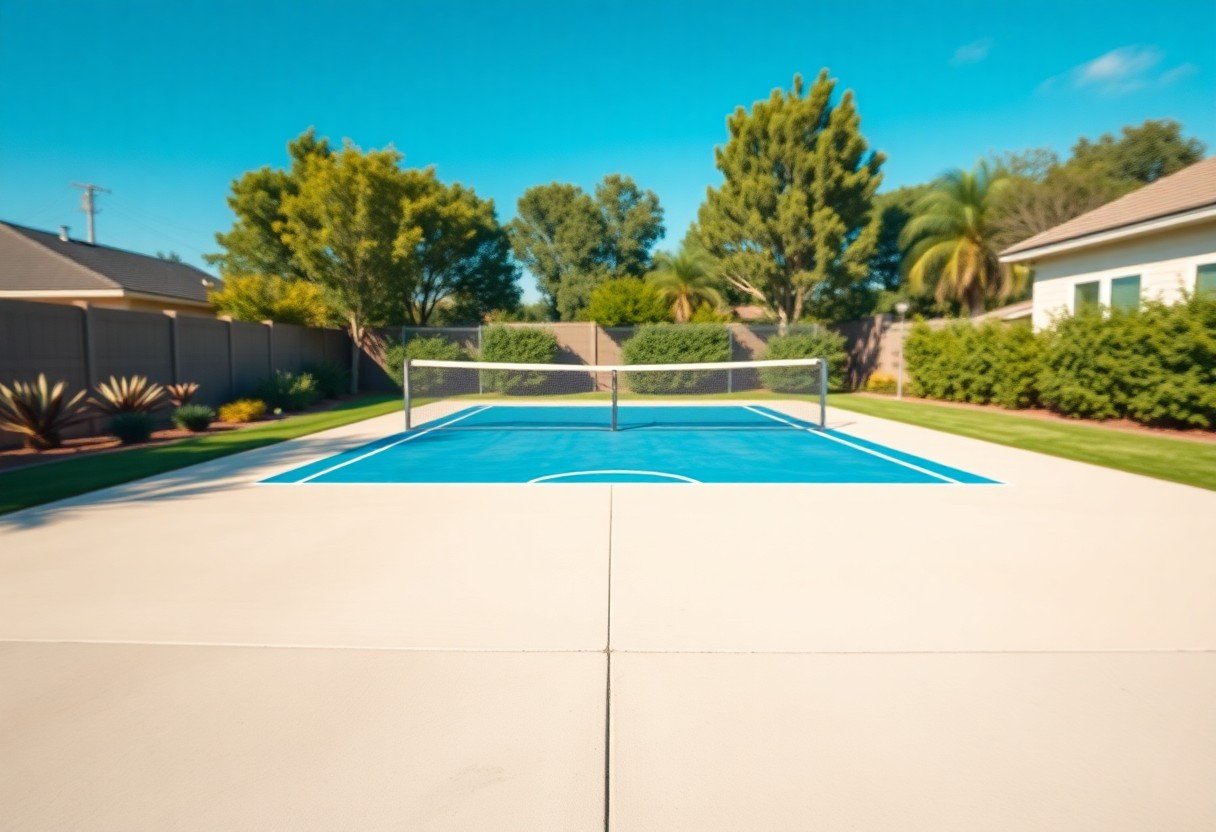
Choosing the Location
Evaluating Backyard Space
You must first measure and evaluate your backyard space to ensure it can accommodate a standard pickleball court size of 20 by 44 feet. Additionally, consider space for movement around the court, ideally adding at least 10 feet on each side. Look for a flat, open area free from obstructions like trees or large structures that could interfere with play.
Ensuring Proper Drainage
Good drainage is important for maintaining your court. If water pools on the court surface, it can lead to damage and unsafe playing conditions. Gradually slope the area surrounding your court to direct water away from it, and consider installing a drainage system if your backyard tends to hold moisture.
Evaluate the existing slope of your yard. You can enhance drainage by adding gravel in low spots or creating a gentle slope away from the court area. If heavy rains create puddles, install perforated pipes beneath the surface to divert water away effectively. This proactive approach prevents future issues and ensures your court remains in optimal condition.
Assessing Sunlight and Shade Levels
Consider the sunlight and shade conditions in your yard throughout the day. A well-lit court optimizes your playing experience, while excessive shade may cause wear to surfaces or dampen visibility during play. Aim for a location that receives full sun for several hours and minimal obstruction from trees or buildings.
Observe how sunlight moves across your yard at different times. If a section of your yard is shaded by tall trees, it might be beneficial to either trim or remove those trees, provided it is within local guidelines. Additionally, consider the court’s orientation; a north-south alignment maximizes sun exposure for most of the day, reducing the impact of shadows after sunrise and before sunset.
Planning and Permitting
Researching Local Zoning Regulations
Before venturing into construction, you need to investigate local zoning regulations. Many areas have specific guidelines regarding residential sports facilities. Check with your local zoning office to find out if there are any restrictions on building a pickleball court, including setbacks, height limitations, and usage rules. Understanding these regulations will prevent potential legal issues later.
Obtaining Necessary Permits
Once you’ve reviewed zoning regulations, the next step is obtaining necessary permits. Typically, you’ll need a building permit, which may require submission of site plans and engineering details. Contact your local permitting office for specific requirements, as these can vary significantly depending on your location.
Consider researching examples of other home projects in your area to understand the standards and documentation needed for your application. Consult with a professional contractor if you’re unsure about the specifics. Engage in discussions with local authorities if there are uncertainties, as they can offer valuable guidance, ensuring all documentation is correct to avoid delays.
Creating a Construction Timeline
Developing a construction timeline is imperative for keeping your project on track. Start by estimating how long each phase will take from site preparation to final finishing touches.
Include key milestones in your timeline, such as the approval of permits, completion of ground leveling, and installation of the court surface. Assign timeframes to each task based on the scope of the work, and factor in potential delays due to weather or material availability. Clear scheduling will help you manage contractor availability and optimize your budget, ensuring timely completion of your pickleball court.
Preparing the Site
Clearing and Leveling the Ground
Start by removing any debris, rocks, or vegetation from your designated area. You need a flat, level surface for the court to ensure proper play. Use a shovel and rake to clear the soil, and a level to confirm the ground is even. In sites with significant slopes, consider bringing in fill dirt to create a uniform playing field.
Installing a Base Layer
Your base layer serves as the foundation for your pickleball court, providing stability and drainage. Begin by laying down a minimum of 4 inches of crushed stone or gravel, compacting it firmly with a plate compactor. This material should allow water to drain quickly, preventing flooding during rainy days.
Choosing a Surface Material
Selecting the right surface material affects gameplay and durability. Many players prefer acrylic or asphalt for their balanced performance and maintenance needs. Consider what suits your budget and desired court aesthetics.
When choosing a surface material, think about both playability and weather conditions. Acrylic coatings can be applied over asphalt for a smoother finish and added color, while also providing some level of shock absorption. Be sure to consult resources like How To Build a Backyard Pickleball Court – The Complete … for additional guidance on making the best choice for your specific environment and preferences.
Building the Court
Laying Out the Court Lines
To mark your pickleball court accurately, start by measuring a standard court size of 20 feet by 44 feet for doubles play. Use chalk or string to outline the dimensions, ensuring that you maintain a distance of 10 feet from any obstacles. Clearly mark the centerline, service boxes, and baseline for optimal gameplay. Double-check your measurements for accuracy, as proper line layout is necessary for a playable court.
Installing the Net System
The net system is a vital component of your pickleball court, set at a height of 34 inches in the center and 36 inches at the sidelines. You can install adjustable posts, which allow for easy height adjustments. Ensure that the net is properly tensioned to avoid sagging during play, as this can affect the game experience.
When installing the net system, secure the posts at least 22 feet apart to maintain court integrity. Use durable materials for the posts and a strong net to resist wear from ball impacts. Extensions or fittings may be needed to anchor the posts firmly into the ground or concrete, providing a solid foundation that will withstand vigorous gameplay.
Adding Fencing for Safety and Control
Fencing around your pickleball court enhances safety and controls ball retrieval during play. Ideally, the fence should be at least 10-12 feet tall to prevent balls from leaving the area. Galvanized steel or chain link are popular options, providing both durability and visibility. Ensure that the fence is securely installed to withstand strong hits without bending or collapsing.
Incorporating fencing not only enhances safety but also adds a level of professionalism to your court. It helps to contain errant shots and keeps pets and children safely away during games. For added aesthetics, consider planting shrubs or installing decorative features along the fence line, keeping the playing area attractive without sacrificing safety and functionality.
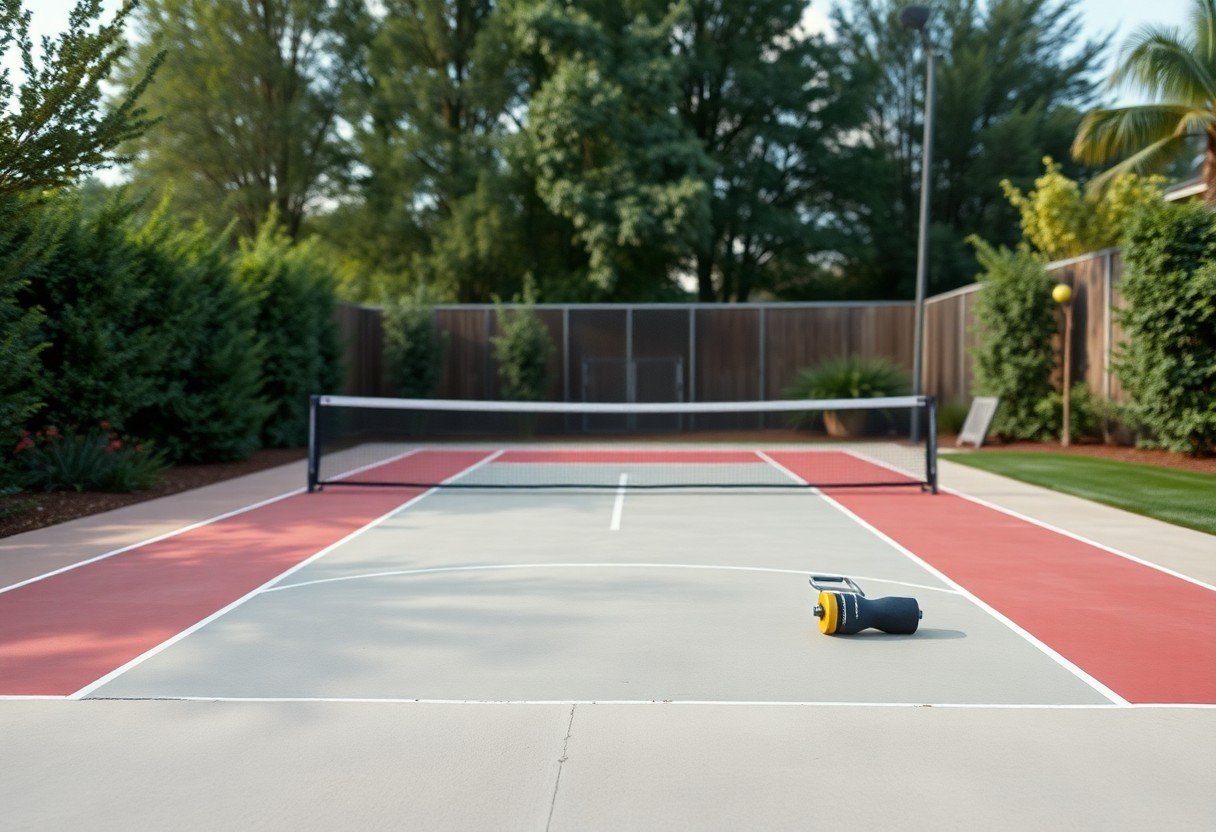
Maintenance Tips for Your Pickleball Court
- Regular cleaning to remove debris
- Surface inspections to identify wear
- Resurfacing every few years
- Regular line painting to maintain visibility
- Weed control around the perimeter
Cleaning and Surface Maintenance
To keep your court in top shape, prioritize cleaning and surface maintenance. Regularly sweep the court to eliminate leaves, dirt, and other debris. Use a pressure washer occasionally to clean deeply embedded dirt while ensuring the surface material is safe and intact. This not only enhances the court’s appearance but also prolongs its lifespan.
Seasonal Care and Repairs
Each season brings unique challenges for your court. As temperatures fluctuate, cracks may develop, so inspect regularly for signs of damage. Apply appropriate sealants for concrete or asphalt surfaces to prevent water intrusion. If you notice any significant wear, consider professional repairs to ensure your court remains safe for play.
Investing time in seasonal care can significantly extend the life of your court. In winter, remove snow or ice gradually to avoid surface damage. During warmer months, watch for signs of wear from frequent use. Regularly applying sealants can protect against weather elements and enhance the court’s durability.
Weekly Inspection Checklist
Conducting a weekly inspection is vital for maintaining your pickleball court. Look for any cracks, wear patterns, or surface debris that may affect gameplay or safety. Check lines for visibility and ensure nets are in good condition. Addressing small issues promptly can prevent more significant problems later.
Having a detailed weekly inspection checklist can streamline your maintenance routine. Create a list that includes checking the surface for damages, ensuring proper net height, and confirming any drainage issues are addressed. This proactive approach not only enhances playexperience but can save you money on larger repairs down the line.
To wrap up
Hence, by following the outlined steps, you can successfully build a pickleball court in your backyard. From choosing the right location and materials to ensuring proper dimensions and surface types, each element plays a significant role in creating a functional space for play. With careful planning and execution, you will enhance your outdoor area while providing a venue for friendly competition and exercise. Enjoy your new court and the many games to come!
FAQ
Q: What are the dimensions of a standard pickleball court?
A: A standard pickleball court measures 20 feet wide by 44 feet long for both singles and doubles play. The recommended perimeter is at least 1-3 feet of extra space around the court.
Q: What materials do I need to build a pickleball court?
A: You will need a flat, level surface, typically concrete or asphalt, along with outdoor nets, court lines marking tape or paint, and optional fencing for boundaries. A good surface texture is important for gameplay.
Q: How do I prepare the ground for a pickleball court?
A: Start by selecting a flat area and clearing it of debris. Level the ground and ensure good drainage to prevent flooding. You may consider adding a base layer of gravel for stability.
Q: Can I convert an existing tennis court into a pickleball court?
A: Yes, existing tennis courts can be adapted for pickleball by adding lines on the court surface. Use tape or paint to mark the appropriate pickleball court dimensions while ensuring the nets are set to the correct height.
Q: What type of net do I need for a backyard pickleball court?
A: A pickleball net should be 36 inches high at the sidelines and 34 inches high at the center. You can purchase a specific pickleball net or use an adjustable tennis net if it meets the height requirements.


